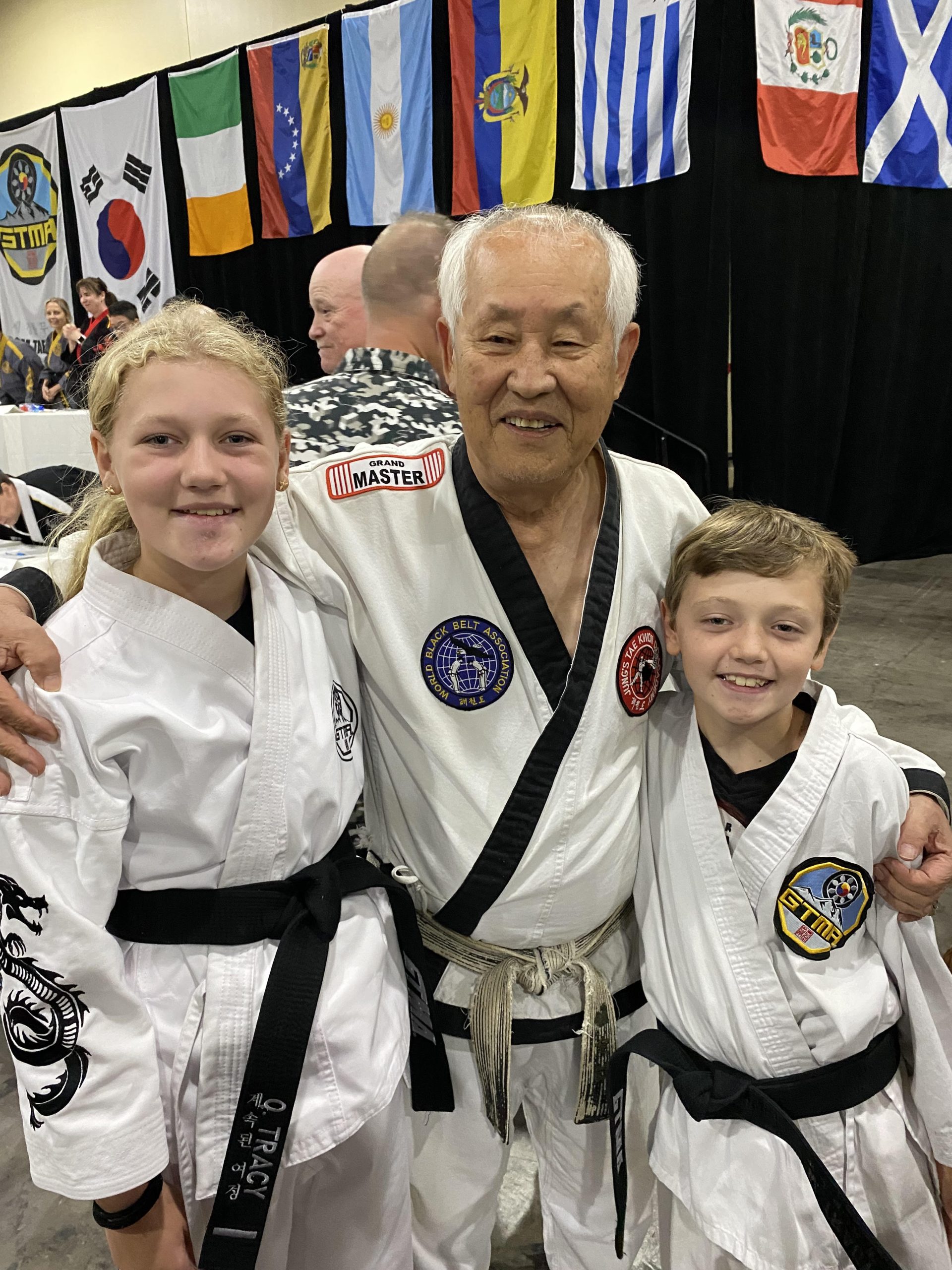
Some young people are naturally good at jumping and kicking. From the time they are white belts in TaeKwonDo, their ability to jump up and down might resemble that of a kangaroo! However, such trainees have a greater tendency to become arrogant. When serving as a judge, I sometimes assess the board breaking event. For those who are very athletic, the board can be purposely held at an angle to make it more difficult to break. The arrogant trainee will soon learn that board breaking is harder than he had previously thought. He will also realize that physical strength is not everything in martial arts. Then he will push himself further to improve his skills.
After the more athletic beginner student has been given a lesson in humility during board breaking, a weaker green belt student should be allowed to break two boards. At this time, very strong students should hold the boards at an angle that facilitates an easier break of the boards. Optimally, when a student is performing a stationary front snap kick, boards should be held at a 45-degree angle, with the upper edge of the board more toward the student performing the break. When a flying side kick is performed, the board should be held at a 30-degree angle, with the lower end of the board more toward the student who is doing the kick; the board holder can even very slightly push the lower end of the board forward at the time of impact. When a reverse side kick is attempted, the board should be at a slight angle with the upper edge tilted slightly toward the kicker.
The angle at which boards are held is very important. If a student is less advanced, the board should be held at a greater angle, and in most cases, this will assist the student in board breaking efforts. When a smaller and weaker student of a higher rank demonstrates his ability to break two boards, the very athletic young students of white belt rank will learn humility and be somewhat sapped of both ki (energy) and pride. They will recognize that their senior colleagues and martial artists have superior abilities, and they will begin to treat the senior students with respect. They will say, “Pilsung,” from their hearts and they will bow their heads at a traditional 45 to 90-degree angle.
This is precisely the kind of psychology of instruction that needs to be applied in the dojang. A good instructor applies such principles in his classes. Understanding and working within the framework of human nature is why a first-rate instructor must also be a first-rate psychologist.
In the dojang, allowable board breaking techniques for each belt level need to be determined in advance. For instance, a rule may be implemented that the white-belt-breaking technique is a side kick applied to one breaking board. A yellow belt could be required to break one board with a reverse side kick. Such rules are also observed in academic settings, where a first-year high school student is not taught a third-year curriculum merely because he is a good student. It would be better to officially promote him to the third-year level before doing so. The same guideline is applicable in martial arts academies because, without it, the atmosphere would not be conducive to orderly instruction.
In school, students are required to pass exams before they are promoted to the next grade level. It is no different in TaeKwonDo. Even if a dojang has an exceptional student, he cannot be promoted to the next belt level without at least going through a proper assessment procedure. In many respects, such a test in TaeKwonDo should be administered even more strictly than academic tests in school! A TaeKwonDo test should focus more on whether a student has an attitude that is proper and necessary to martial arts practitioners, rather than on his ability to perform technical movements.
Suppose that a student is promoted and given a green or black belt without having undergone a full and proper assessment process. Ultimately, this will do more harm than good, especially for the student. The credibility of the academy will also be undermined, and other students will start to feel jealous, disappointed, distrustful, and perhaps even inferior. These types of problems can eventually force such an academy to close its doors.
Order, harmony, and mutual respect are central to TaeKwonDo. If these qualities are not present, a martial arts academy can hardly continue to call itself an effective academy of martial arts training.
